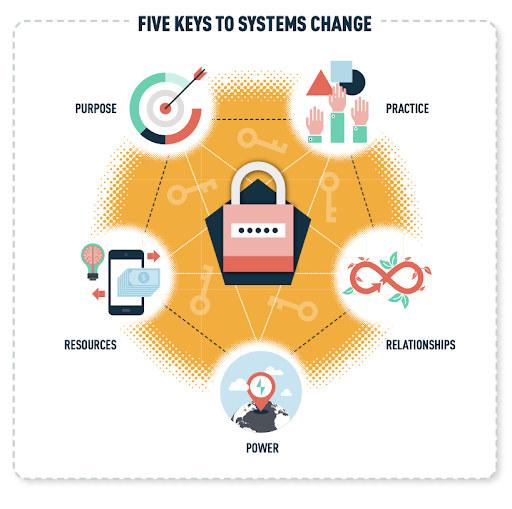Keys of System Change
ABOUT
SYSTEMS CHANGE
An intentional approach to shift the conditions that hold the current system in place. By doing so we will catalyse a shift away from the old, centrally controlled and often colonial humanitarian system to a new one, fairer and more just, that redistributes power and resources among local communities and to those directly affected by crises and disaster.



